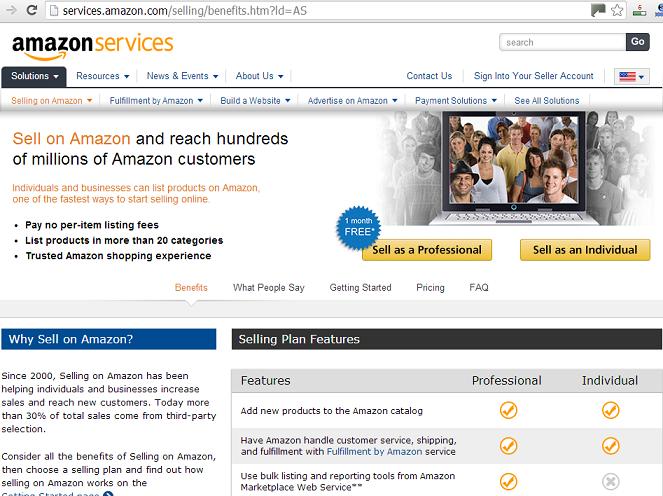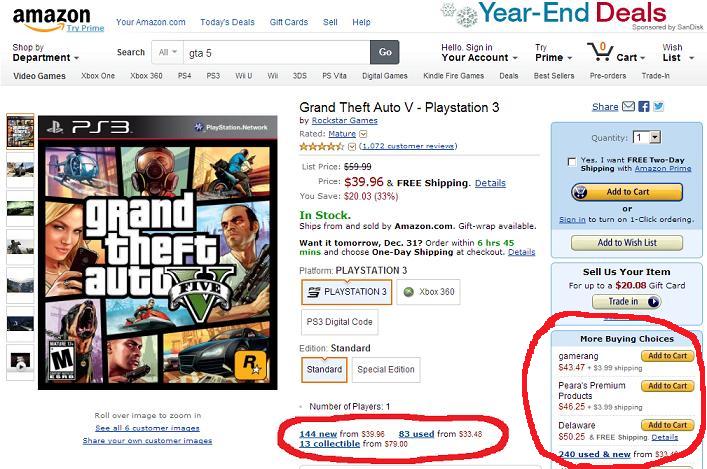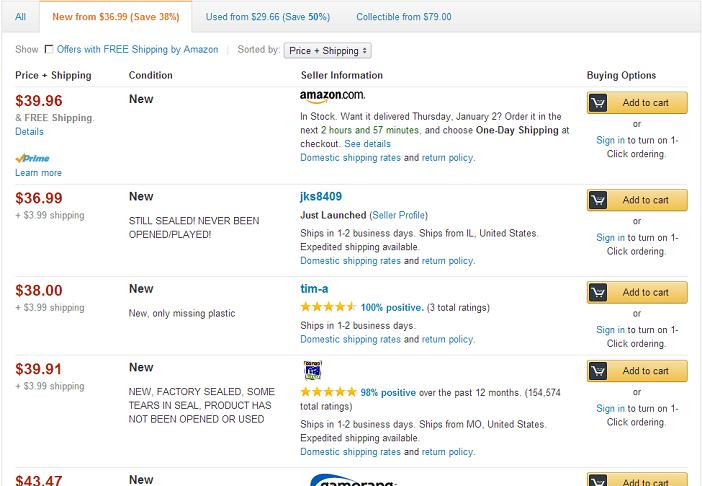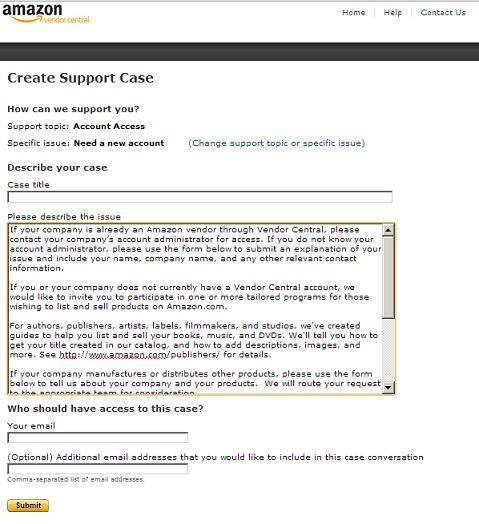Trading with Amazon
Amazon is the world’s largest online retailer. In addition to its main website at amazon.com and its distribution centre in the United States, it also has websites and distribution centres in many other countries, including United Kingdom, France, Germany, Italy, Spain, Canada, Australia, Brazil, Japan, China, India and Mexico. Trading with amazon may provide huge potential for any company trading video games, consoles, electronics, DVD’s, etc.
There are two ways to trade with Amazon.
- Sell on Amazon, Sellers account, retail trade
- Sell to Amazon, Vendor account, wholesale trade
1. Selling on Amazon, Sellers account, retail trade.
In addition to selling directly to end customers, Amazon also provides a platform for other traders to sell on its website. This gives Amazon’s customers a choice to buy an item either directly from Amazon, using so called “Buy Box”, or from other sellers, in “More Buying Choices” box. For becoming a seller on Amazon, a company needs to create a Seller account at http://services.amazon.com/content/sell-on-amazon.htm.
Depending on volumes that the company is planning to sell, it may chose to register either as professional or individual. Selling on Amazon provides access to millions of Amazon’s customers. Amazon provides images and descriptions for sold items on its site, plus, once an order is made, Amazon also handles the payments for the Sellers. Sellers have to do only delivery of sold items to end customers. There is a monthly fee plus commission for Sellers, depending on volume and country. A list of applicable fees can be found on Sellers account page.
An additional service called “Fulfilled by Amazon” (FBA) is available for Sellers, who would like Amazon to also do delivery for them. Sellers ship their items to Amazon’s warehouse, where they get stored, and after making a sale, the delivery is made from Amazon’s distribution centre. There is an extra charge for the FBA service.
2. Selling to Amazon. Vendor account, wholesale.
Amazon sells huge volumes across many product lines. In order to sell huge quantities, Amazon needs to buy huge quantities from its suppliers. It sources goods from many vendors. Amazon buys not only directly from publishers and manufacturers but also from third party independent suppliers. Becoming a vendor means that your products appear in so called Amazon’s “Buy Box”, i.e, when customers click on “Buy” to buy from Amazon, they are essentially buying from Amazon’s vendor. In theory becoming a vendor means much greater volumes of sale, though there are also drawbacks.
Two major drawbacks include (1) Amazon sets retail sale prices itself and vendor has no control over it, unlike Seller account holders; (2) Amazon takes a major, 55% commission for each vendor sale, compared to only 5 – 20% for sellers accounts. Major advantage is that most Amazon website users prefer to buy directly from Amazon rather than other sellers, and this provides significantly larger sales for vendors.
In order to become a vendor and sell wholesale to Amazon, companies need to visit Amazon’s Vendor Central portal at https://vendorcentral.amazon.com and request a new account through special form at https://vendorcentral.amazon.com/st/vendor/public/contactusapp page.
After receiving your request, Amazon would evaluate it, and if it finds your company eligible as potential vendor, an account manager from Amazon would contact you to discuss your application further and will send you an electronic invitation code for making an application. Sometimes Amazon may itself encourage most active Seller account holders to shift to a vendor account. Companies need to make careful calculation before they decide if they want to have a seller account or a vendor account.
Selling on Amazon may be quite profitable. Companies that diversify their customer portfolio should definitely consider also Amazon platform. Amazon continues expanding and is aiming to increase its market share even more in future. It has been very successful so far, and there is no reason to assume that this will not continue at least in near future. Traders of all size can benefit, they should keep Amazon in mind as one of the biggest players in the market and try to think of ways to use their position and trade with them, rather than compete with them.







